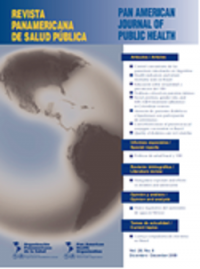Scientists probe Zika congenital syndrome at Brazil meeting

Scientists from Brazil, Colombia and Argentina, experts from the Pan American Health Organization and the World Health Organization (PAHO/WHO), and officials from the Centers for Disease Control and Prevention (CDC) are probing the details of Zika virus infection and its effects on the fetus at a technical meeting in Recife, Pernambuco this week. They plan to advance toward defining exactly what Zika congenital syndrome would be, based on data they have collected so far.
After a field visit to health care facilities in Recife that care for infants who have microcephaly and other conditions associated with Zika virus infection, the scientists heard an overview of the epidemiological situation, presented by PAHO’s Incident Manager for Zika, Dr. Sylvain Aldighieri. They are looking at systematic reviews of data on Zika, and sharing country experiences from Brazil and Colombia.
The clinicians, experts, and researchers plan to continue technical presentations and group discussions through today, with the aim of analyzing evidence and agreeing on a “preliminary characterization of the syndrome associated with congenital Zika virus infection.”
The experts noted, “The range of abnormalities seen and the likely causal relationship with Zika virus infection suggest the presence of a new congenital syndrome. WHO has set in place a process for defining the spectrum of this syndrome. The process focuses on mapping and analyzing the clinical manifestations encompassing the neurological, hearing, visual and other abnormalities, and neuroimaging findings.”
Information on the complications resulting from Zika virus infection is still limited, and the scientists plan to share data on diagnosis, description, consequences, physical processes and analysis of evidence from clinicians and researchers on their main findings so far.
“Our aim is to assist the countries in strengthening surveillance of Zika and Zika Congenital Syndrome, in addition to enhance readiness for dealing with Guillain-Barré cases in health services. The spatial and temporal association of Zika and Guillain-Barré syndrome is evident in various countries,” noted PAHO/WHO’s Aldighieri at the international meeting.
“We had the opportunity to go to IMIP (Instituto de Medicina Integral Professor Fernando Figueira), in Pernambuco, and see the excellent, incredible, work that they are doing in following up and taking care of about 200 children with microcephaly. It’s important that we get this kind of work to other parts of Brazil and the world for children affected with microcephaly”, said PAHO/WHO’s Director of Family, Gender and Life Course, Dr. Andres de Francisco. “We also should remember that Zika is not the only cause of microcephaly and microcephaly is not the only possible sign of Zika,” he added.
Dr. Luis Codina, PAHO/WHO’s deputy representative in Brazil, said, “After almost a year of very strong work done by various groups of researchers, today there is a certain consensus in associating Zika not only with microcephaly, but also with other aspects of a congenital syndrome. PAHO wants to facilitate this process of investigation and generation of knowledge.”



